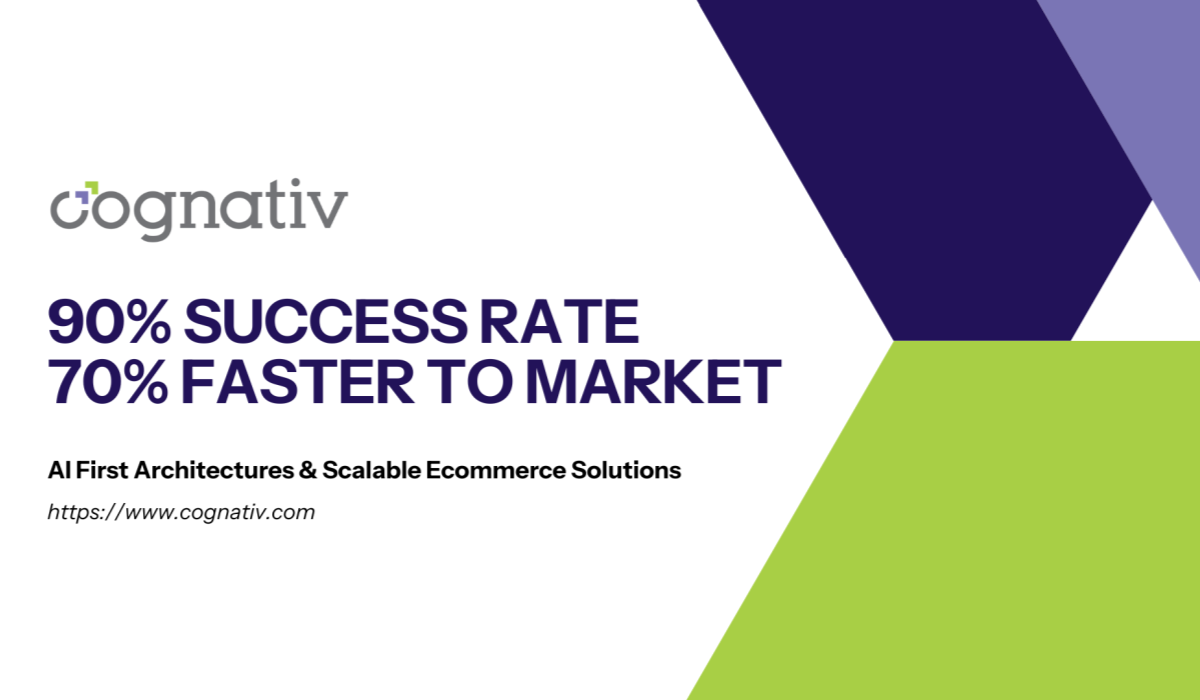Generative AI Services: Powering the Future of Intelligent Automation
Generative AI is redefining the way organizations operate, communicate, and create. From automating customer interactions to generating text, images, and code, generative AI services are becoming central to digital transformation strategies across industries.
Leveraging foundation models and advanced AI tools, these generative AI services are powered by advanced large models and AI models, including LLMs and multimodal systems, which enable a wide range of capabilities. Gen AI solutions are driving transformative potential by enabling scalable automation, innovation, and strategic value for businesses.
Key Takeaways
-
Generative AI services allow companies to automate complex tasks and drive innovation.
-
Foundation models enable contextual understanding, fine-tuning, and advanced content creation.
-
Integration with AI-powered tools boosts employee productivity and operational efficiency.
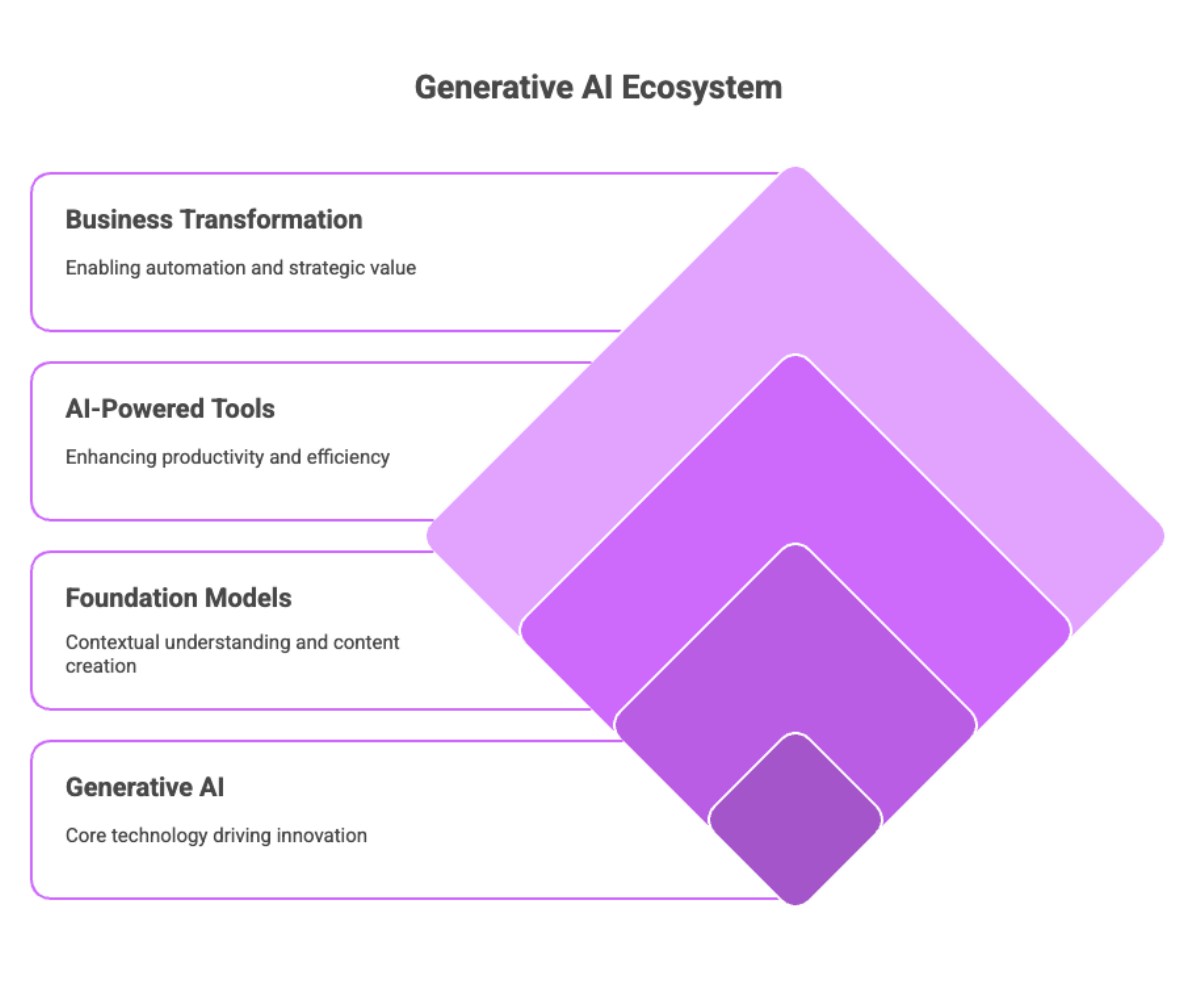

Understanding Generative AI Technology
Generative AI refers to systems that create new content—such as text, images, audio, or code—by learning from existing data. Unlike traditional rule-based systems, generative AI models use advanced machine learning and deep learning techniques to simulate creativity and contextual understanding. In addition to these, generative AI can produce other forms of data and content, such as video, music, or digital assets, demonstrating its versatility across multiple domains.
These systems rely heavily on foundation models, including large language models like GPT and image generators like Stable Diffusion, which are pre-trained on massive datasets and later fine-tuned for specific tasks. Stable Diffusion is an example of open source models in generative AI, allowing users to modify, run locally, and benefit from community-driven development.
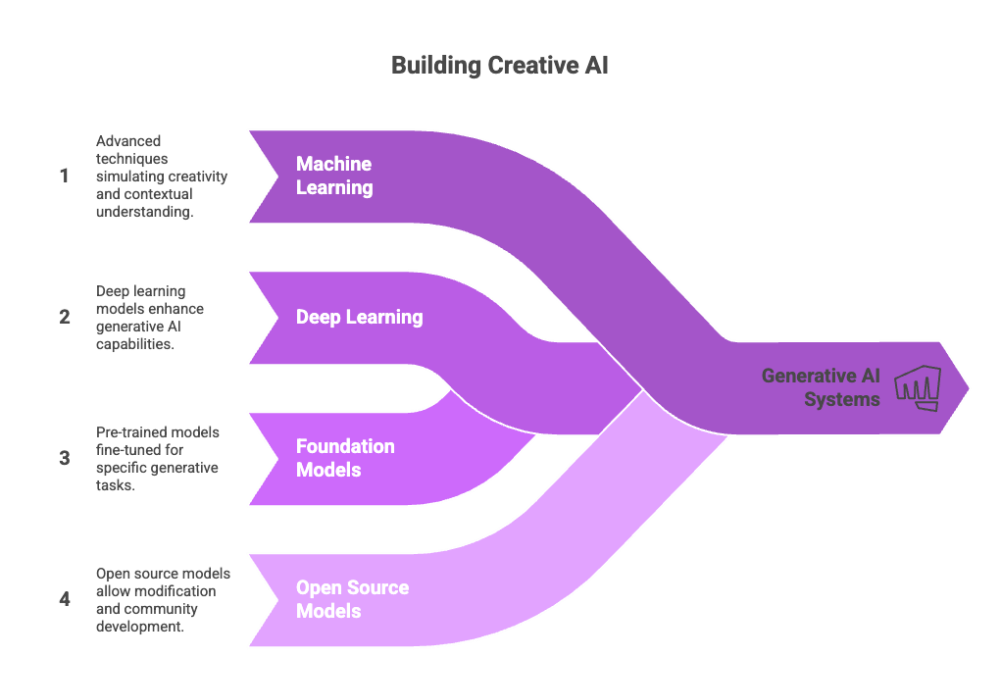

The Business Value of Generative AI Applications
The use cases for generative AI applications span across departments and industries:
-
Marketing teams can automate content creation and generate tailored product descriptions.
-
Customer support can deploy AI assistants capable of understanding natural language and generating accurate responses.
-
HR departments can streamline onboarding processes, generate training materials, and enhance the employee experience. Generative AI can also be used to improve employee experiences by personalizing workflows and HR systems, making workplace environments more engaging and efficient.
Generative AI not only enhances employee productivity, but also provides differentiated experiences that boost customer satisfaction and brand loyalty. Organizations can build generative ai applications tailored to their specific business needs by leveraging foundation models and advanced tools.
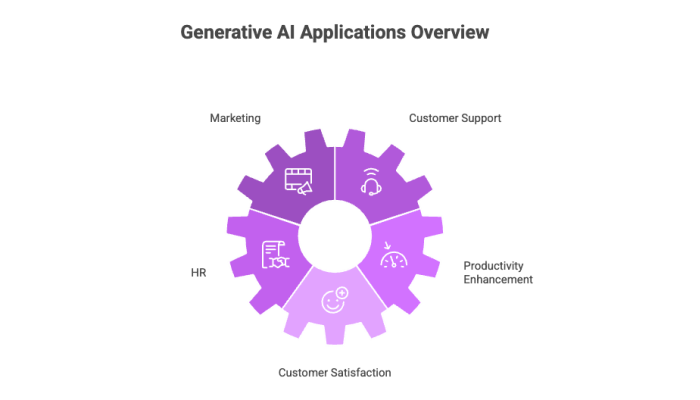

Model Development and Customization
Creating high-performing generative AI models involves a structured model development lifecycle. This includes:
-
Training models on high-quality datasets.
-
Applying fine-tuning to improve performance on niche tasks.
-
Utilizing retrieval augmented generation (RAG) to combine structured knowledge with generative output.
To achieve optimal results, it is essential to train models using large datasets and perform additional training periodically. This helps maintain model quality, prevent degradation, and incorporate new data as part of ongoing AI development.
Organizations can customize models for internal workflows, including code generation, data visualization, and report writing. This ability to tune models ensures alignment with specific business needs. Deploying custom models and integrating them with existing ml models enables comprehensive and scalable AI solutions tailored to organizational requirements.
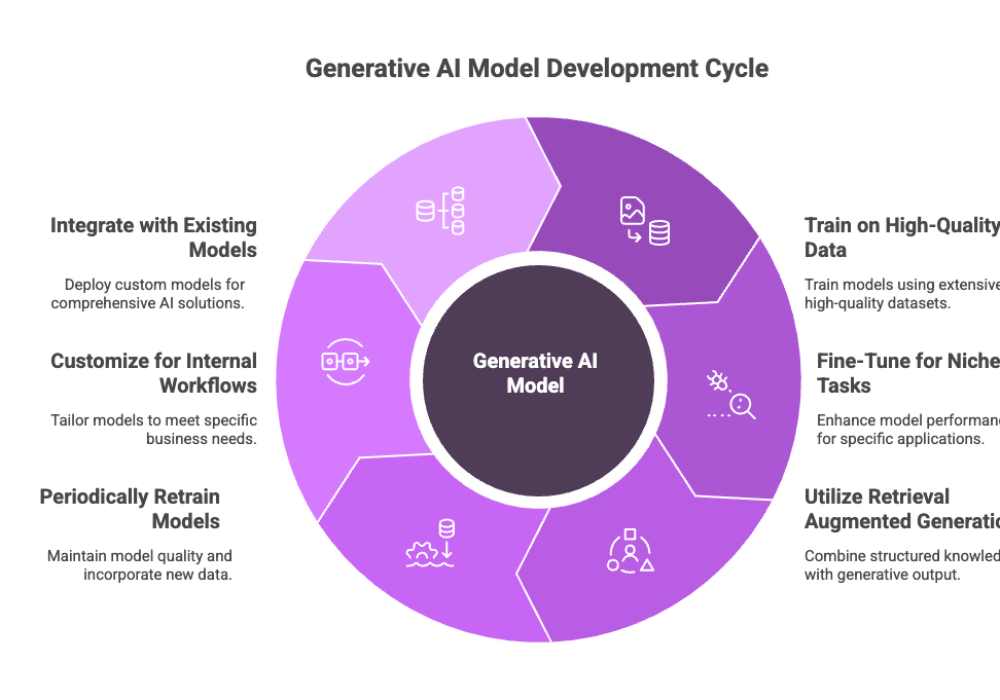

Integrating AI into Business Processes
Seamless integration of generative AI into business processes allows organizations to:
-
Automate common tasks like email drafting, document summarization, or compliance reporting.
-
Reduce dependency on manual labor, improving time-to-value.
-
Support AI-powered decision-making by turning unstructured data into actionable insights.
Organizations should also consider the high costs associated with deploying and maintaining generative AI solutions, including infrastructure and data management expenses.
The most effective deployments combine generative AI with other machine learning models to deliver multi-functional solutions across customer service, operations, and IT.
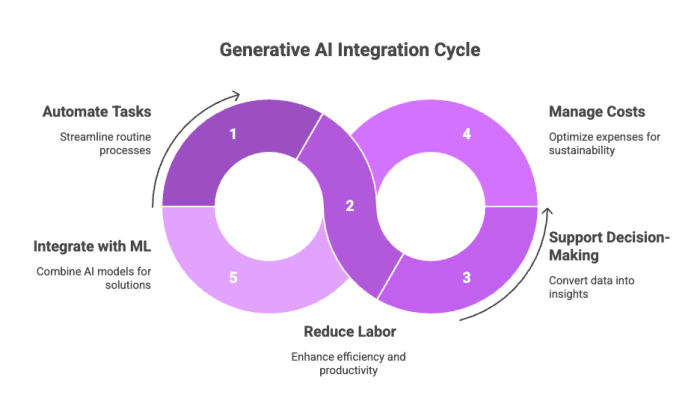

Boosting Employee Productivity with Generative AI Tools
With the rise of hybrid and remote work, AI tools play a crucial role in enabling smarter, faster work. Generative AI services support:
-
Real-time document drafting and correction.
-
Language models that automate translation, proofreading, and summarization.
-
Custom AI integrations that help employees complete tasks with greater accuracy.
The result? Elevated employee productivity and a smoother employee experience.
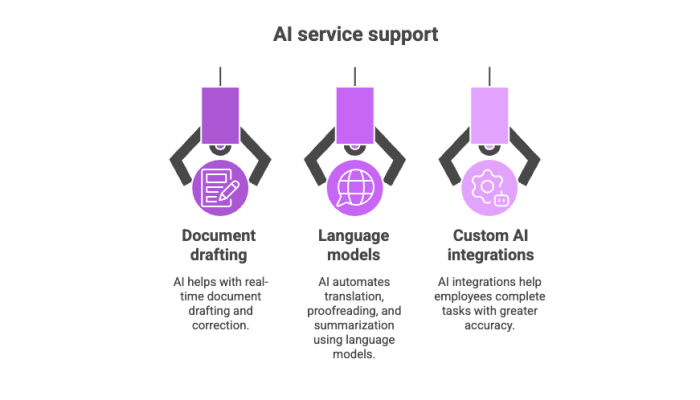

Generative AI for Creative and Analytical Tasks
Generative AI isn’t just about automation—it enhances the creative process as well. Businesses are using image generation, text generation, and data science integrations to produce high-value outputs in less time.
By combining AI-powered insights with human oversight, teams can generate unique content, identify patterns, and enhance decision-making with greater confidence.
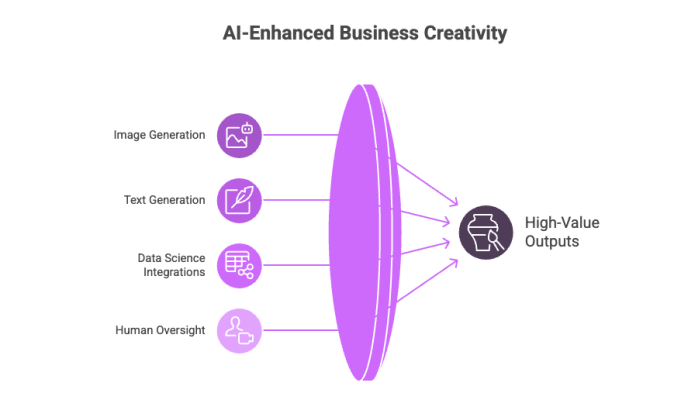

Code Generation and Development with Generative AI
Generative AI is transforming the landscape of software development by automating and streamlining the code generation process. With the power of advanced generative AI models and large language models, developers can now generate high-quality code from natural language prompts, reducing manual effort and minimizing errors. Tools powered by these models, such as GitHub Copilot, can suggest code snippets, complete functions, and even build entire modules, allowing teams to boost productivity and focus on more complex, creative tasks.
Beyond writing code, generative AI assists in generating comprehensive documentation, creating test cases, and automating routine development activities. This not only accelerates the development cycle but also improves code consistency and quality. By leveraging generative AI for code generation, businesses can empower their development teams to innovate faster, reduce technical debt, and deliver robust software solutions with greater efficiency.


Ensuring Security and Responsible AI Use
While generative AI holds immense potential, AI systems must be designed with data privacy and responsible AI principles in mind. This includes:
-
Addressing bias and ensuring fairness in AI development.
-
Securing sensitive data through encryption and access controls.
Frameworks such as the European Union’s AI Act and global AI ethics guidelines are shaping the future of responsible AI adoption.
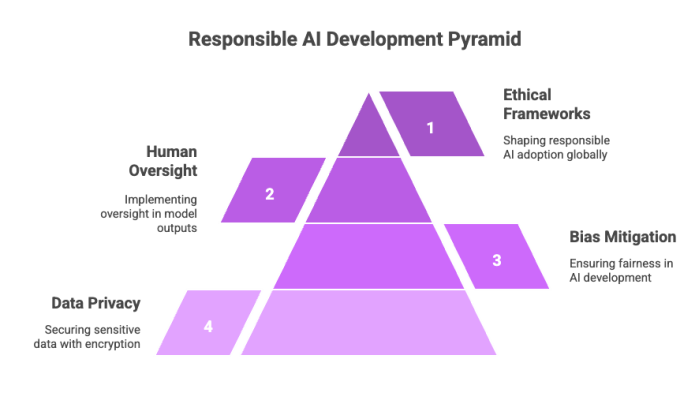

United States Regulations and Compliance in AI
In the United States, the regulatory landscape for generative AI is evolving rapidly to address the unique challenges posed by these technologies. Federal agencies and lawmakers are focused on ensuring responsible AI development and deployment while fostering innovation. Key initiatives include voluntary agreements among major AI companies to implement watermarking and detection techniques for AI-generated content, aimed at combating misinformation and misuse.
The U.S. government has also introduced executive orders and legislation to promote transparency, accountability, and ethical standards in AI systems. These measures emphasize protecting sensitive data, preventing bias, and encouraging human oversight throughout the AI lifecycle. Agencies such as the National Institute of Standards and Technology (NIST) are developing frameworks and guidelines to help organizations implement trustworthy AI practices.
For businesses deploying generative AI services, compliance involves adhering to data privacy laws, conducting risk assessments, and maintaining clear documentation of AI model development and usage. By aligning with U.S. regulations and best practices, organizations can mitigate legal risks, build consumer trust, and position themselves as leaders in responsible AI innovation.
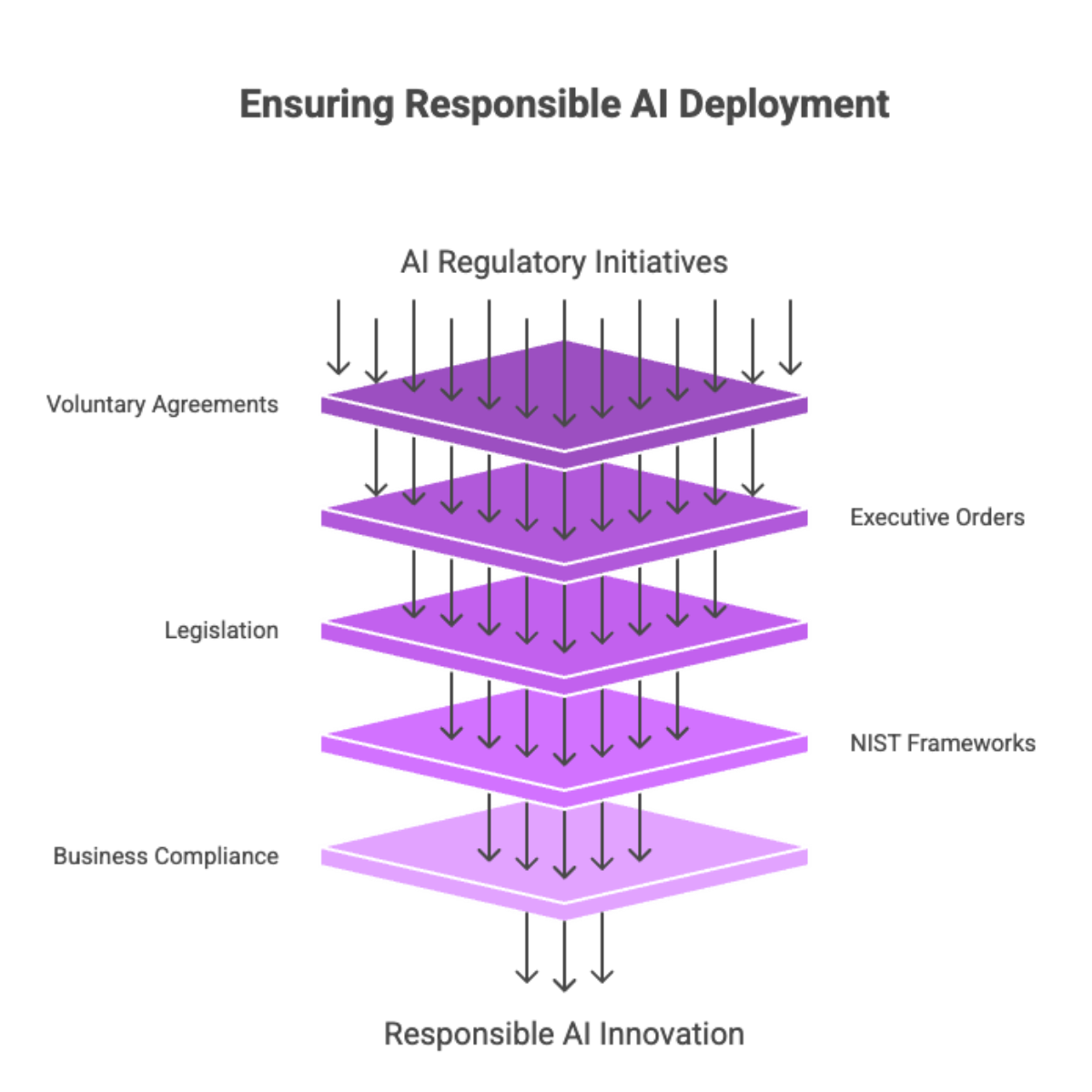

European Union Regulations and Compliance in AI
As generative AI becomes more prevalent, regulatory compliance is a top priority—especially within the European Union. The EU’s Artificial Intelligence Act sets a global benchmark for responsible AI, emphasizing transparency, accountability, and the protection of fundamental rights. For businesses deploying generative AI systems, this means adhering to strict requirements around data quality, model transparency, and human oversight.
To ensure compliance, organizations must implement robust governance frameworks, conduct regular audits of their AI models, and provide ongoing training on responsible AI practices. By embedding these principles into their AI development lifecycle, businesses can mitigate risks, foster trust with customers, and maintain a strong reputation in the European market. Prioritizing responsible AI not only ensures regulatory alignment but also positions companies as leaders in ethical and innovative artificial intelligence.
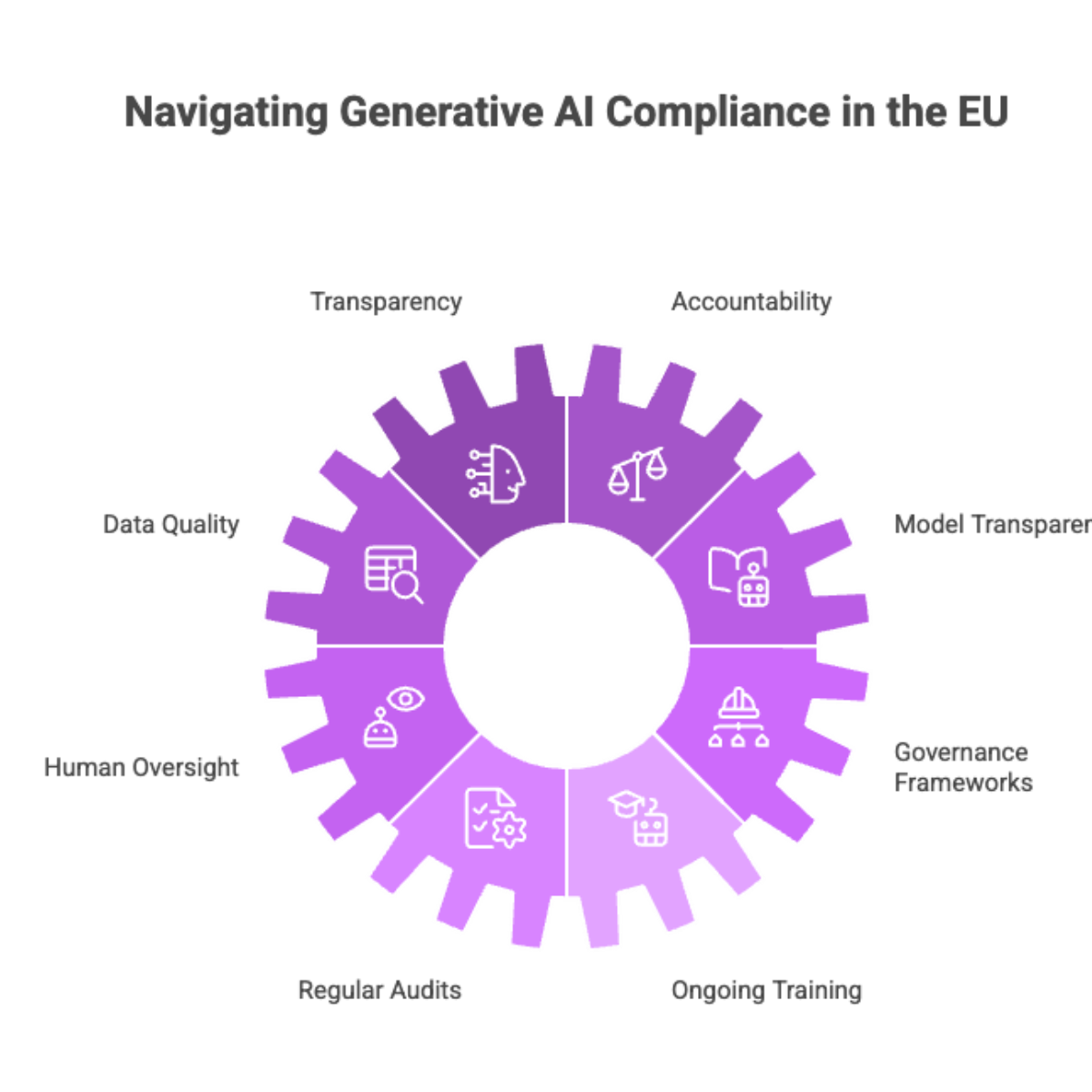

The Role of Data Scientists in Generative AI Projects
Data scientists are essential in the AI journey, guiding model selection, evaluation, and deployment. Their expertise in machine learning operations (MLOps) ensures that:
-
Models are trained on clean, relevant training data.
-
Performance is continuously monitored and improved.
-
Generative outputs align with strategic business objectives.
They also manage model fine-tuning, iterate with new data, and ensure model transparency through metrics and interpretability tools.
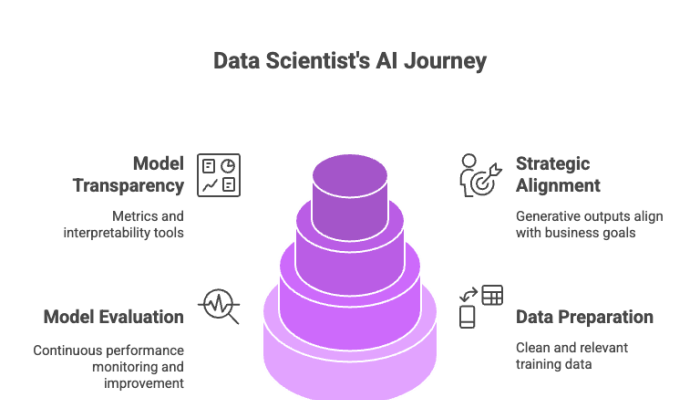

MLOps and Predictive AI for Scalable Deployment
Scaling generative AI solutions requires a solid foundation in machine learning operations (MLOps). MLOps brings together machine learning, data engineering, and DevOps best practices to streamline the entire model development and deployment process. This approach ensures that generative AI models and other machine learning models are efficiently trained, tested, and managed throughout their lifecycle.
Predictive AI, which leverages statistical and machine learning models to forecast trends and behaviors, is a key application area that benefits from MLOps. By integrating predictive AI with generative AI models, businesses can drive innovation, unlock new revenue streams, and respond quickly to changing market demands. With MLOps, organizations can confidently deploy large-scale generative AI solutions, ensuring reliability, scalability, and continuous improvement in their AI-powered operations.
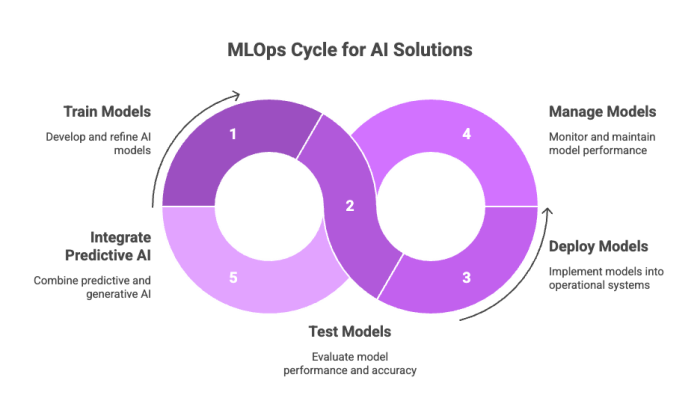

AI Upskilling and Education for the Modern Workforce
The rapid evolution of generative AI is reshaping the skills required in today’s workforce. To keep pace, businesses must invest in AI upskilling and education programs that empower employees to work effectively with advanced AI systems. These initiatives should cover essential areas such as machine learning, natural language processing, data science, and the ethical use of generative AI models.
By fostering a culture of continuous learning and responsible AI, organizations can equip their teams with the expertise needed to drive innovation and maximize the value of generative AI. Training programs should also emphasize best practices in AI governance, transparency, and human oversight, ensuring that employees are prepared to navigate the complexities of modern AI applications. Ultimately, a well-trained workforce is key to unlocking the full potential of generative AI and maintaining a competitive edge in the digital economy.
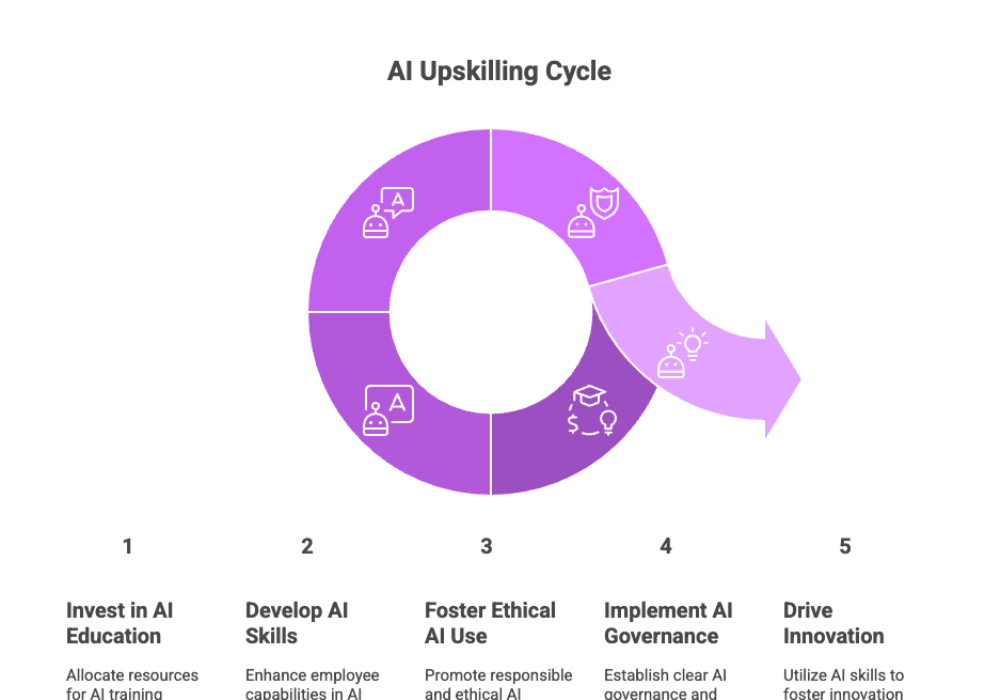

Business Readiness for Generative AI Adoption
Successfully adopting generative AI requires a strategic and holistic approach. Businesses should begin by assessing their current infrastructure, evaluating data quality, and identifying gaps in AI skills within their teams. Developing a clear roadmap for AI adoption—including defined objectives, key performance indicators, and alignment with business goals—is essential for maximizing the impact of generative AI systems.
Equally important is the commitment to responsible AI practices. This means ensuring transparency, explainability, and human oversight are built into every stage of the AI lifecycle. By proactively addressing these factors, businesses can build trust with stakeholders, minimize risks, and create a strong foundation for sustainable AI adoption. With the right preparation and a focus on responsible innovation, organizations can harness the transformative power of generative AI to drive long-term business success.
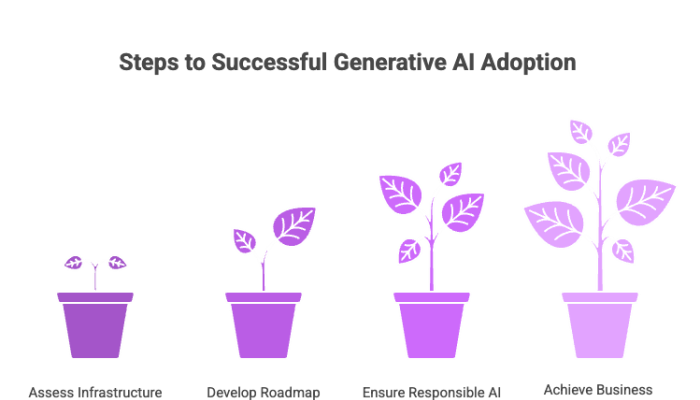

Choosing the Right Generative AI Solutions
When evaluating generative AI solutions, businesses should consider:
-
Support for multiple foundation models and use cases.
-
Fully managed services versus custom AI stacks.
-
Cost-effectiveness and scalability of the AI development process.
Additionally, businesses should assess how generative AI may affect the quality and relevance of search results, as low-quality or spam content generated by AI can negatively impact their online presence.
Open-source options allow for control and flexibility, while enterprise vendors offer end-to-end services optimized for production use.
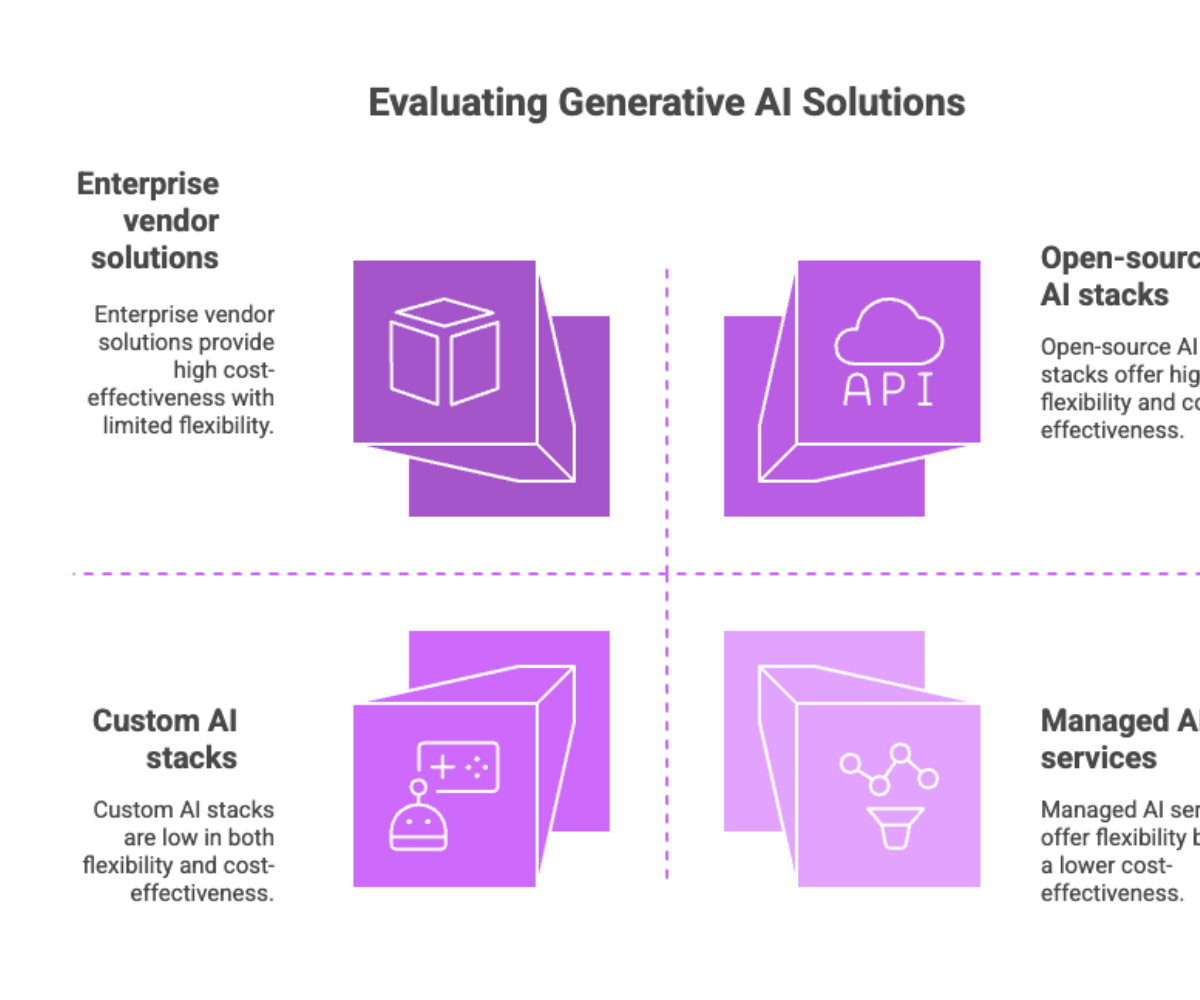

Driving Innovation Through AI Adoption
Generative AI is not just a tool—it’s a growth strategy. From AI-powered chatbots to personalized marketing, organizations are leveraging AI to:
-
Accelerate go-to-market strategies.
-
Build competitive differentiation through intelligent automation.
Next generation AI platforms and tools are enabling even greater advancements in intelligent automation, offering unified and powerful environments for building, training, and deploying AI solutions.
As businesses progress on their AI journey, investing in the right infrastructure and upskilling their workforce will be key to sustainable success.
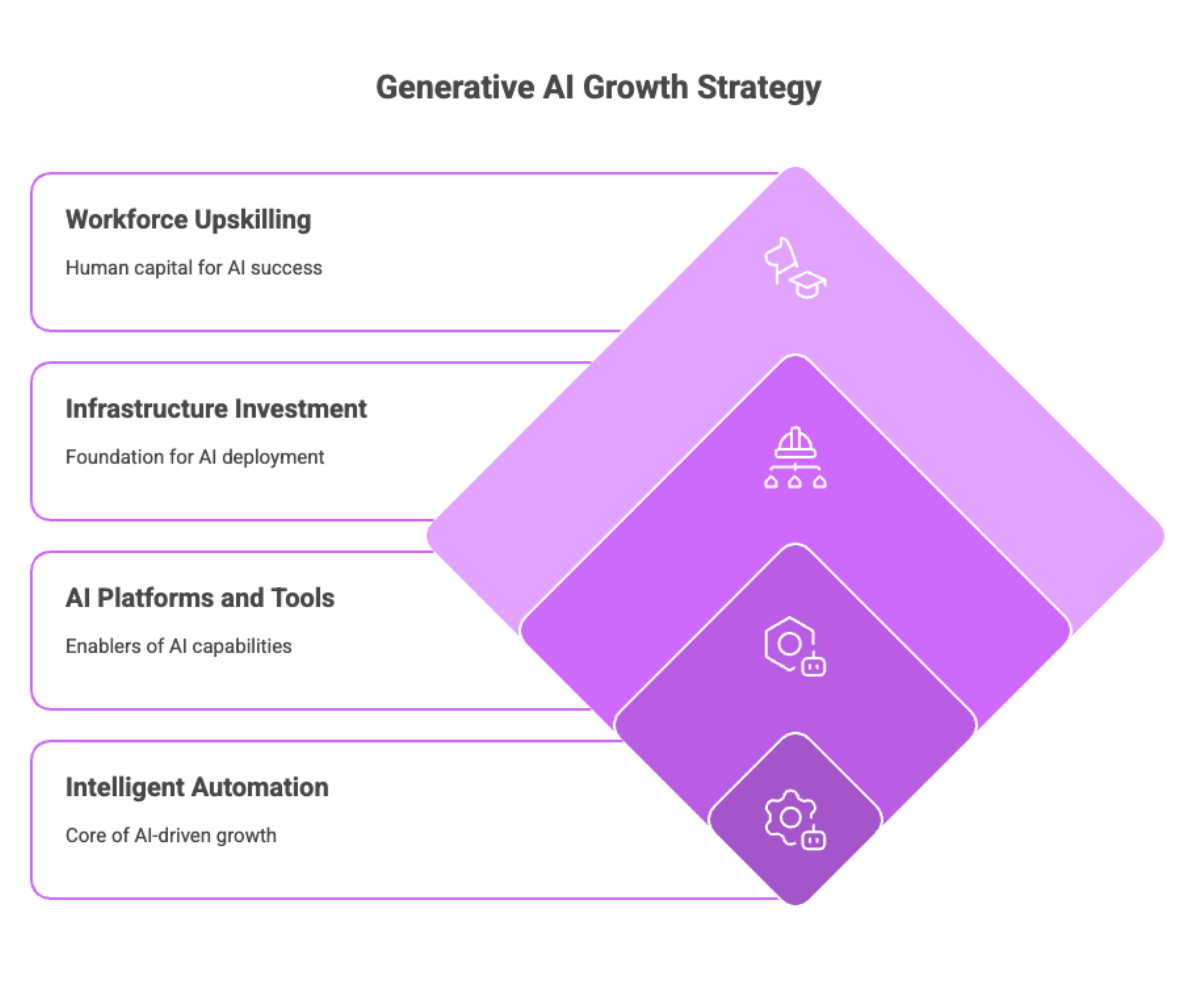

Conclusion and Next Steps
Generative AI services represent a major leap forward in artificial intelligence, enabling organizations to transform processes, generate content, and extract insights at unprecedented speed. With the right AI models, data, and governance, businesses can unlock a new era of intelligent automation.
As the technology matures, expect more advanced generative AI tools, tighter integration into existing platforms, and a strong emphasis on responsible AI practices.


